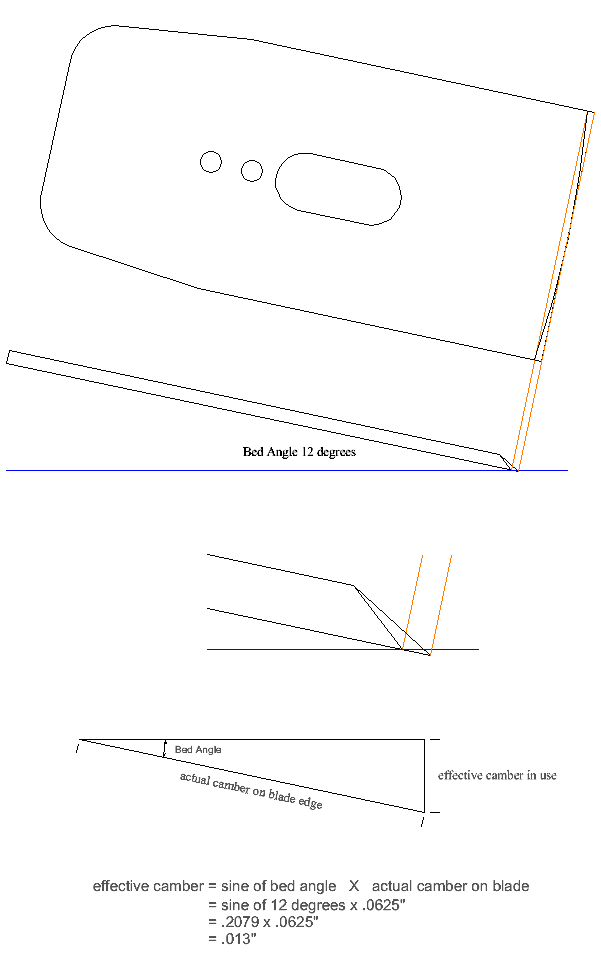|
|
|
The shape of the cutting edge--whether it’s straight or curved, and what shape the curve should be for different tasks--will substantially affect how well a plane performs. I hope to add a more complete treatment of this, but for now here’s a drawing that shows how to calculate the amount of blade curvature (camber) needed in order to prevent tracks at the edge of a shaving. In the drawing below, the term “actual camber” refers to the distance the center of the blade extends past the corners of the blade, in this case 1/16 of an inch. The term “effective camber” describes the thickest shaving the blade will be able to take without leaving tracks. For the bevel-up smoother in this example, its 12 degree bed angle results in a maximum shaving thickness of thirteen thousandths of an inch.
|
 |
|
[Home] [Summary of Results] [Testing Procedure] [Sharpening] [Planing] [Chipbreaking] [Cutting Angles] [Shaving Formation] [Tuning Infill Planes] [Links & References] [Contact] [Site Map] |